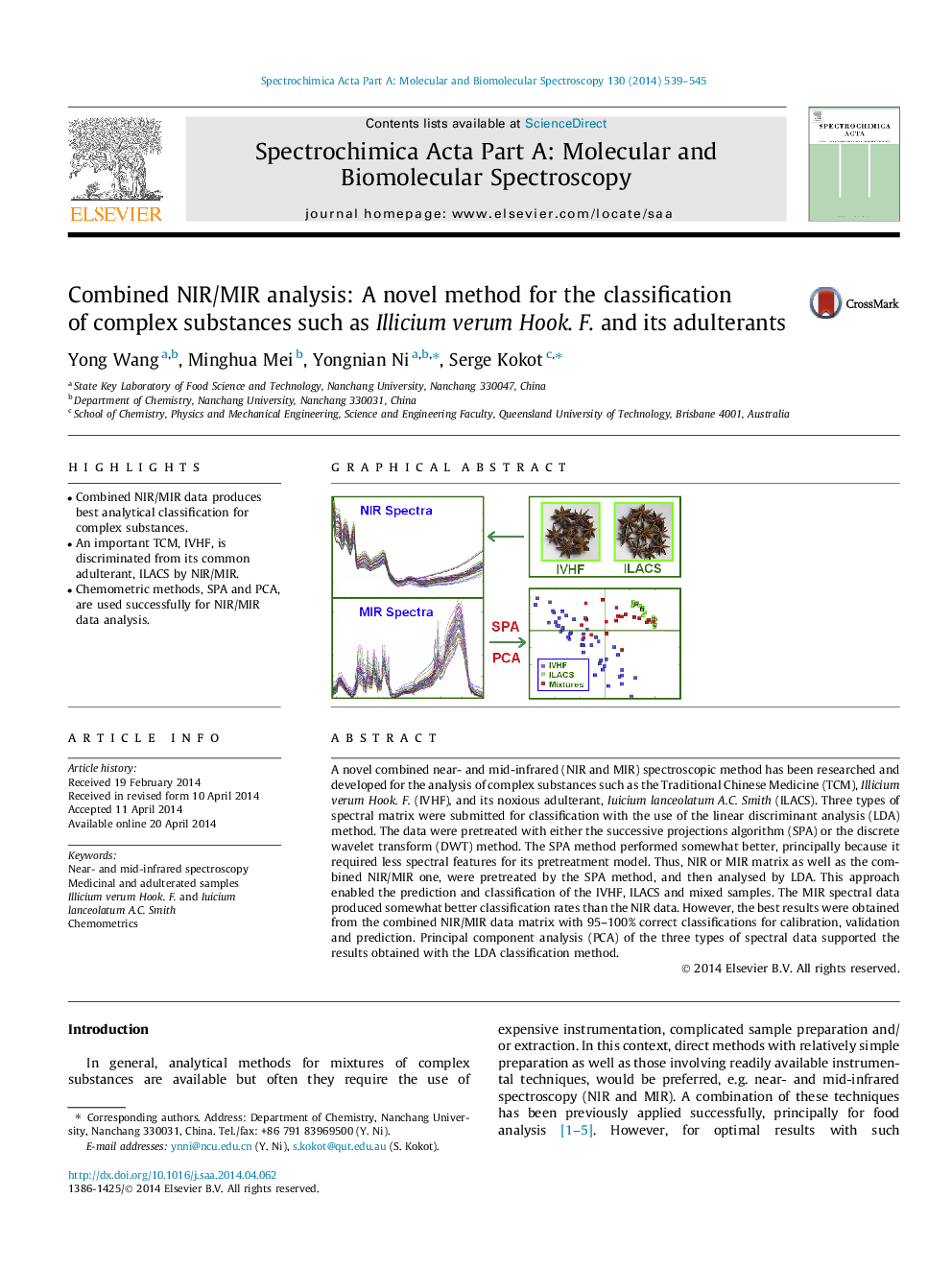| Article ID | Journal | Published Year | Pages | File Type |
|---|---|---|---|---|
| 1230385 | Spectrochimica Acta Part A: Molecular and Biomolecular Spectroscopy | 2014 | 7 Pages |
•Combined NIR/MIR data produces best analytical classification for complex substances.•An important TCM, IVHF, is discriminated from its common adulterant, ILACS by NIR/MIR.•Chemometric methods, SPA and PCA, are used successfully for NIR/MIR data analysis.
A novel combined near- and mid-infrared (NIR and MIR) spectroscopic method has been researched and developed for the analysis of complex substances such as the Traditional Chinese Medicine (TCM), Illicium verum Hook. F. (IVHF), and its noxious adulterant, Iuicium lanceolatum A.C. Smith (ILACS). Three types of spectral matrix were submitted for classification with the use of the linear discriminant analysis (LDA) method. The data were pretreated with either the successive projections algorithm (SPA) or the discrete wavelet transform (DWT) method. The SPA method performed somewhat better, principally because it required less spectral features for its pretreatment model. Thus, NIR or MIR matrix as well as the combined NIR/MIR one, were pretreated by the SPA method, and then analysed by LDA. This approach enabled the prediction and classification of the IVHF, ILACS and mixed samples. The MIR spectral data produced somewhat better classification rates than the NIR data. However, the best results were obtained from the combined NIR/MIR data matrix with 95–100% correct classifications for calibration, validation and prediction. Principal component analysis (PCA) of the three types of spectral data supported the results obtained with the LDA classification method.
Graphical abstractFigure optionsDownload full-size imageDownload as PowerPoint slide
